Dear -free advocates and hungry breakfasters,
While I like to think we eat a clean, real-food diet, doing the Whole30 challenge has revealed to me where I am lacking in that area – highlighting bad habits I’ve developed, areas I’ve gotten lazy. And while I love everything on the Whole30, sometimes I just want to eat a breakfast that isn’t made out of eggs!
Well hello, UnGranola.
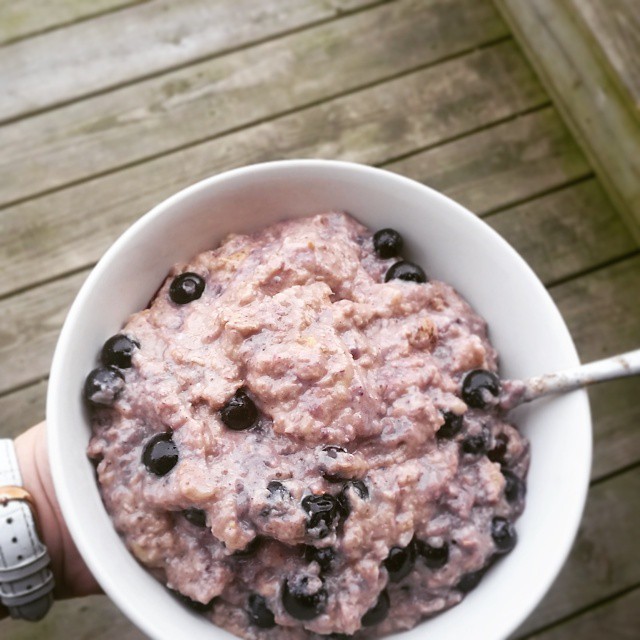
Whole30, in short, means no dairy, no grains, no pseudo-grains like quinoa seeds or buckwheat, no sugars including maple syrup or honey or stevia except for fruit sugars, no legumes (peanuts, beans, soy), and no psychologically-enhanced grain-free Paleo baked indulgences like coconut flour pancakes and muffins. What I do eat are a lot of eggs, mountains of green vegetables, free-range and grass-fed meat from local farmers, fruits, nuts … potatoes, root vegetables, seaweed, seafood, coffee, Choffy, tea and lots of other good stuff. It takes creativity and energy to put together meals without dropping back into habits that are long-established, and there is basically Nothing At All in the grocery store that is pre-made that fulfills the Whole30 requirements, so if one is tired and doesn’t feel like cooking but is also hungry, one is out of luck. (You’d be surprised how much stuff has pea protein in it, am I right?)
Benefits for this pregnant lady on Whole30 (under midwife supervision) include: on Day 23 today, this is the longest stretch I’ve gone without throwing up since I got pregnant. I love me some good food, but I hate seeing it twice! As of about Day 5, my life-interruptingly uncomfortable hiccups and overwhelming chest-pressure ceased entirely, enabling me to do things like breathe during the day, and sleep laying down, instead of propped up over four hundred pillows. And my legs – it’s like the excess baby weight is already trimming itself down despite the fact that I am consuming more calories now than I ever did before, because my clothes fit more easily (but the belly still grows!).
So back to eating a breakfast with no eggs. We eat a lot of fried, scrambled, poached, and boiled eggs in general, because we like them. Yet sometimes I just want something else in the morning, like a hot bowl of porridge with fruit on top. I don’t know if this strays in to “non-Whole30 approved psychological destruction” of the program, but at any rate it keeps me happy on the program and I still feel refreshed, nutritionally fulfilled, and experience none of the negative side effects that my previous (carbohydrate-enhanced) meals were apparently giving me.
I also wanted something Relatively Fast – I don’t always feel like/want to spend forty hours in the kitchen making a meal, so I wanted to make a mixture that could be chucked on the stove, oatmeal-style, and cooked up in just a few minutes. I wanted something the little kids would eat. I wanted something with nutrition, variety, flavor and spices. I wanted something that goes in a bowl and I eat, earthy peasant-style, with a too-large spoon. This satisfies all the requirements, and still meets the standard of no grain, dairy, legumes blah blah.
Enter UnGranola.
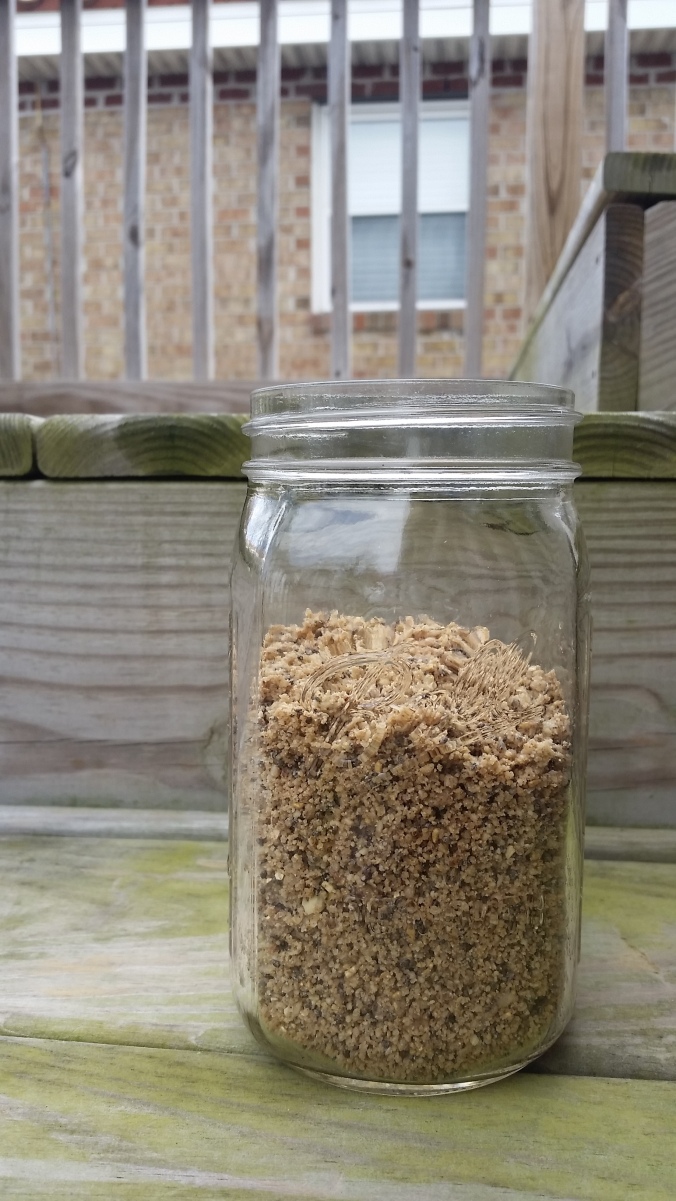
Peaches ‘n cream, anyone?
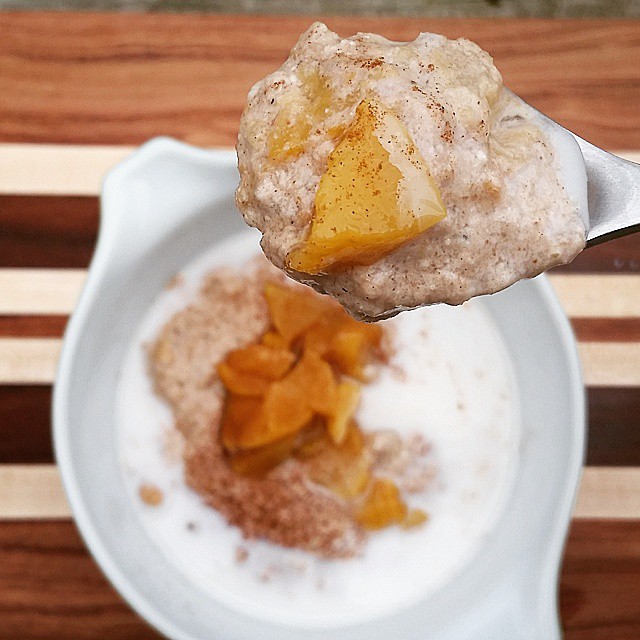
This porridge fulfills the desire for texture, warmth, a little sweetness if you desire (sometimes I do, sometimes I don’t). And while I like the popular Paleo nut-butter porridges and make those from time to time, they ultimately are something I can only have few and far between because the very nutty smoothness of them gets underwhelming after a while. Download the recipe PDF for UnGranola Porridge at the bottom of this post!
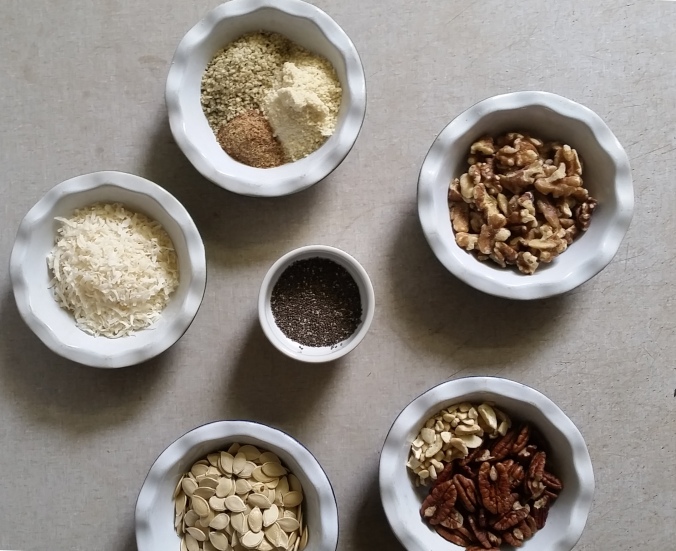
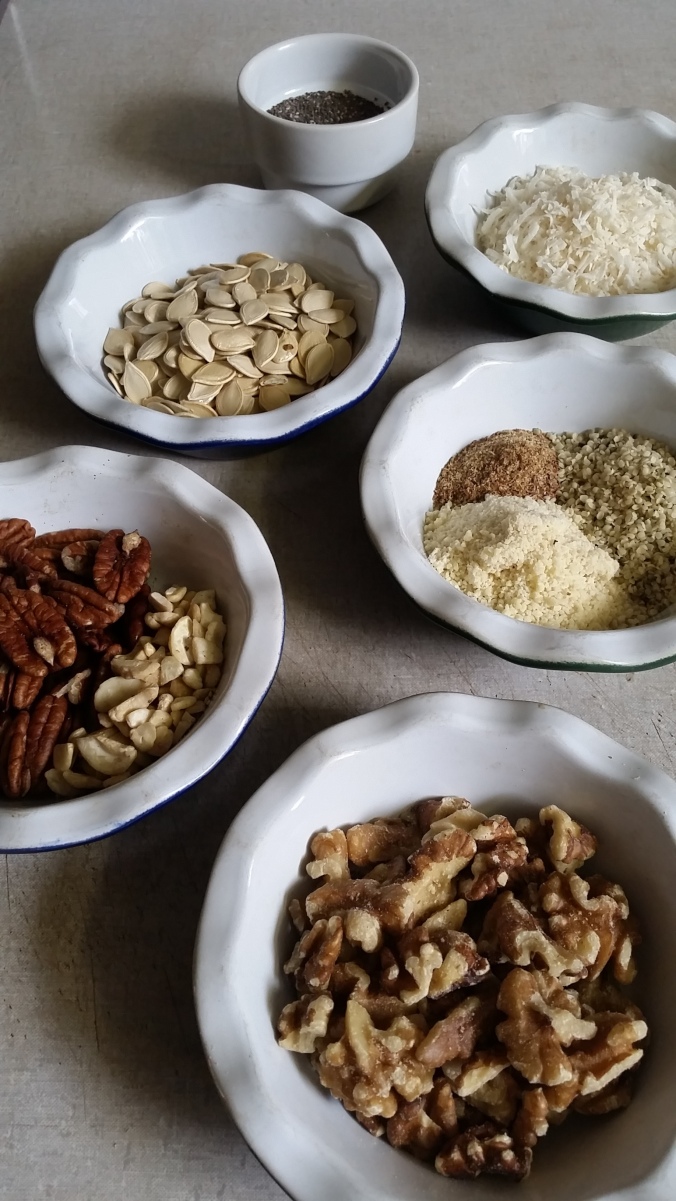
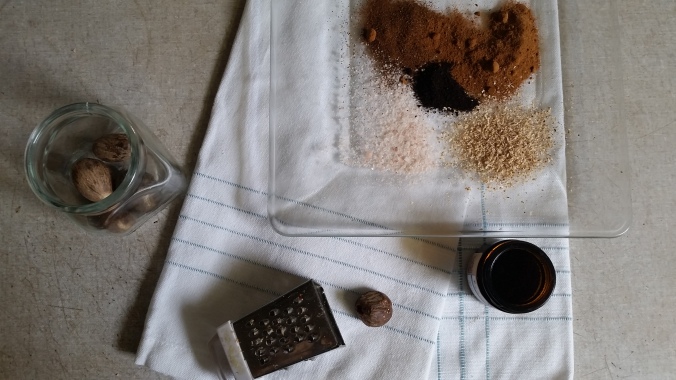
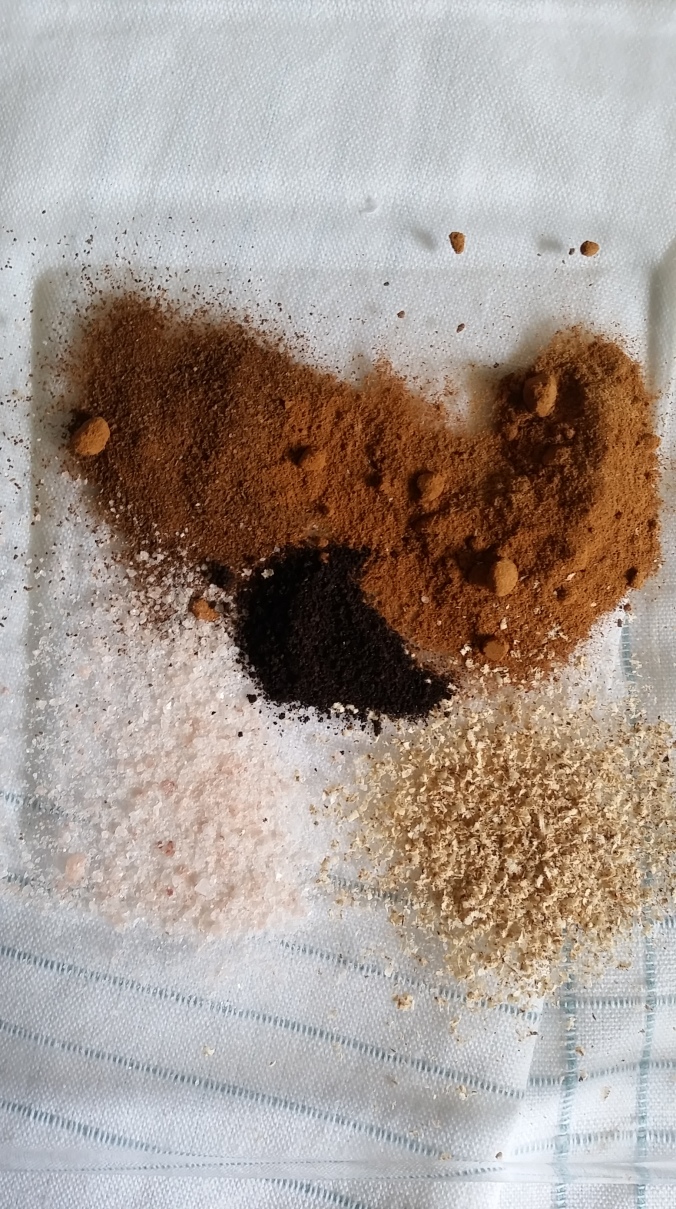
The ingredients can vary widely based on your taste, or what you have available in your pantry. Spices can be mixed up to suit your personal preference, too – I love using cinnamon, cloves, fresh nutmeg and a little vanilla powder – because on Whole30 you can’t use vanilla extract, there are too many illegal ingredients! Plus, using powder keeps my mixture nice and dry. I order it from Beanilla and use it for all sorts of things in the kitchen!
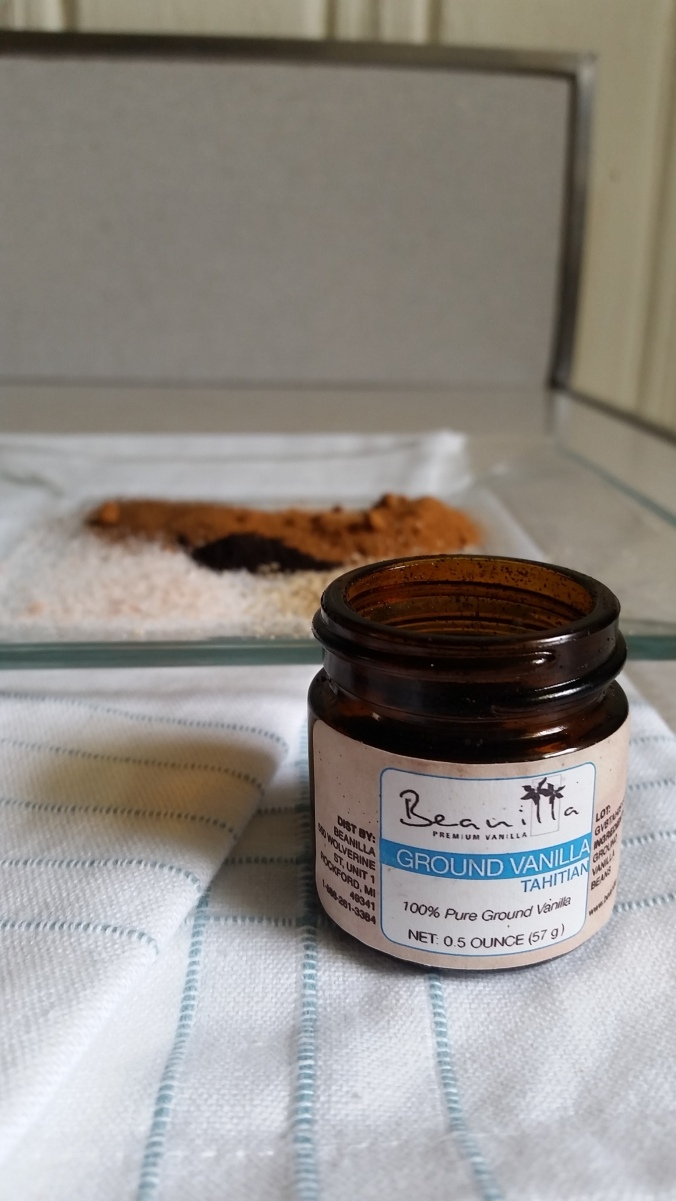
Everything goes in the blender or food processor to mix – you have to be careful that you don’t churn it into a paste-like nut butter, though! I think a food processor is the best option, but I don’t have one so the Vitamix is my go-to. The new, wide-based Vitamix would be perfect for this! Sometimes I use the dry cup, but it doesn’t make much difference really.
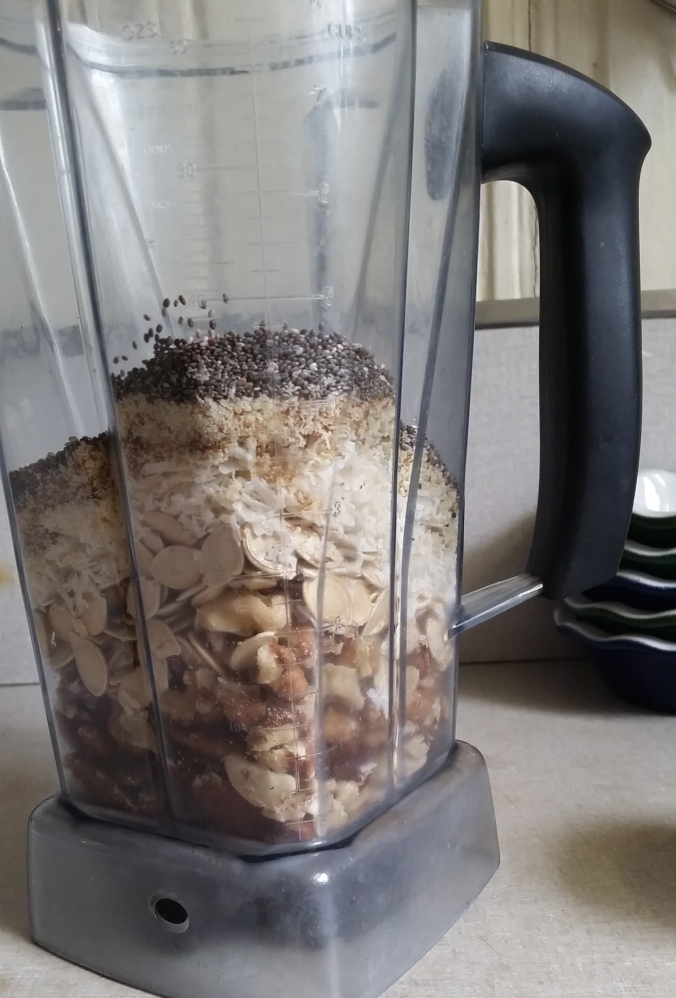

Once everything is ground together, as coarse or as fine as you prefer, you have a handy mix to keep in the fridge! I keep it refrigerated because I don’t want the nut oils to go rancid – our house gets pretty warm in the spring and summer. A dark, cool pantry might be just fine, but the fridge is a nice, safe bet.
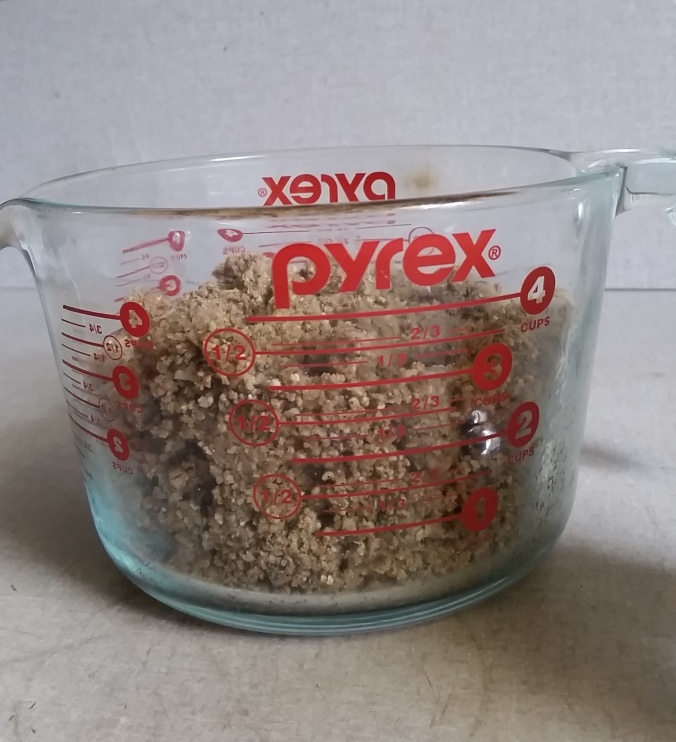
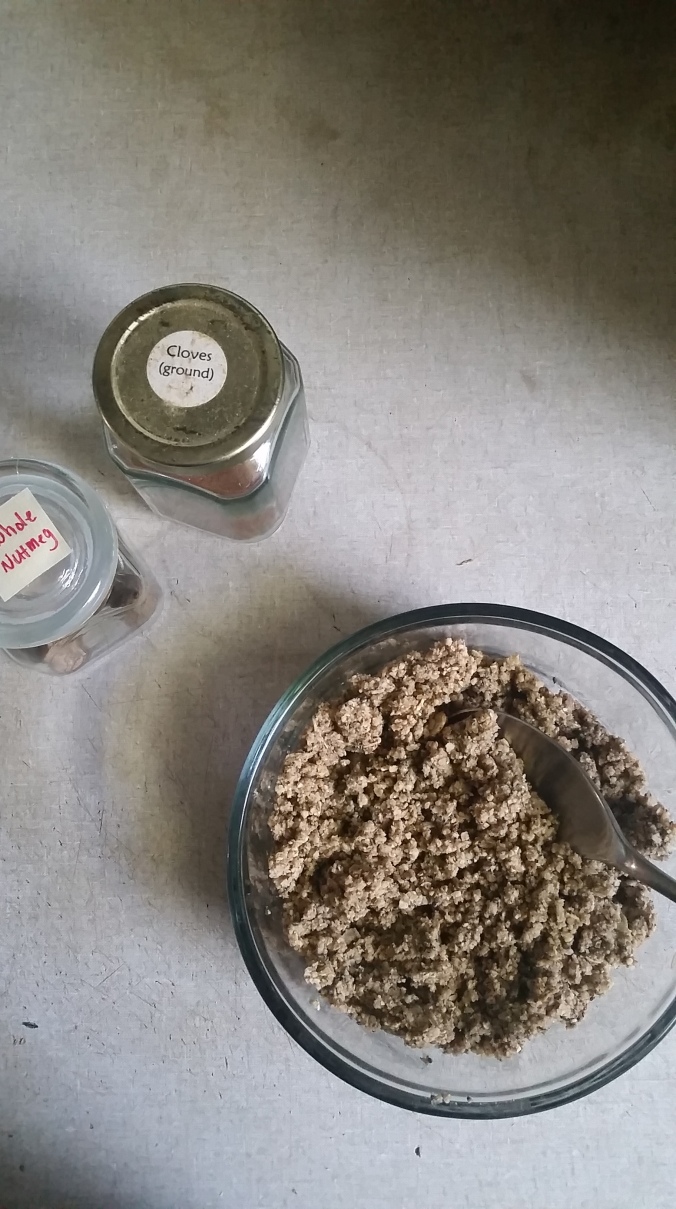
To prepare your delicious morning bowl of UnGranola, you take a scoop of the mixture and add a liquid to it. This can be whatever you like! Coconut cream and water, coconut milk, fresh almond milk, goat milk or cow’s milk if you drink dairy.
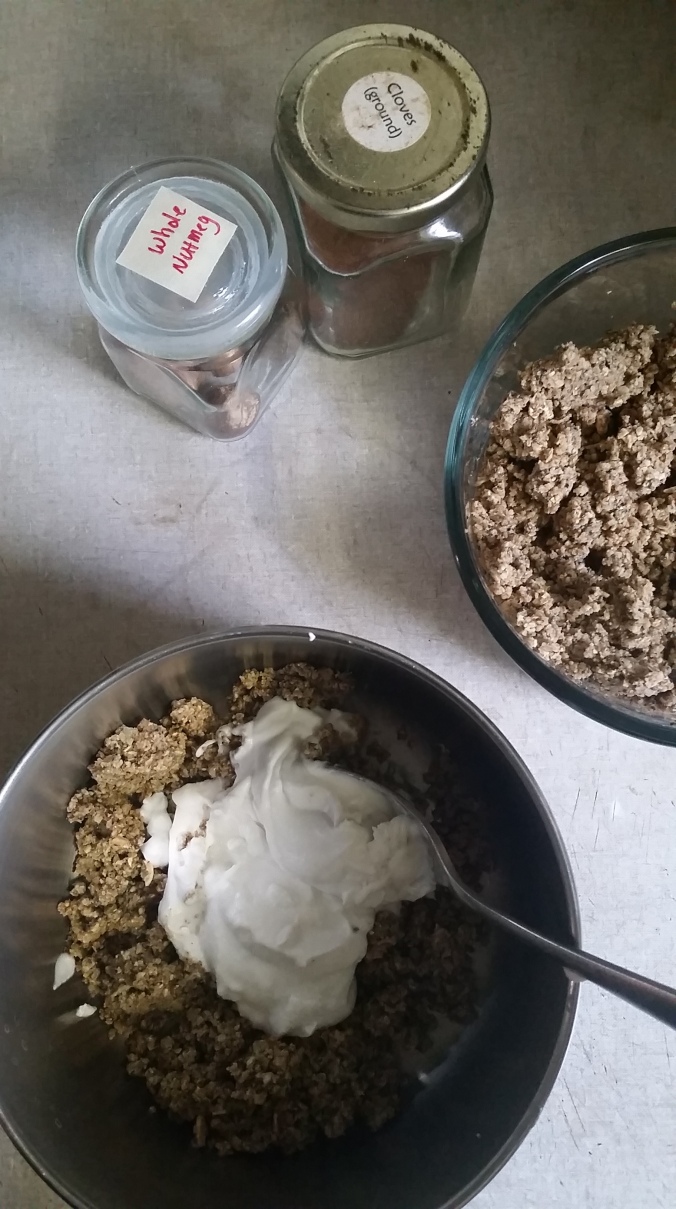
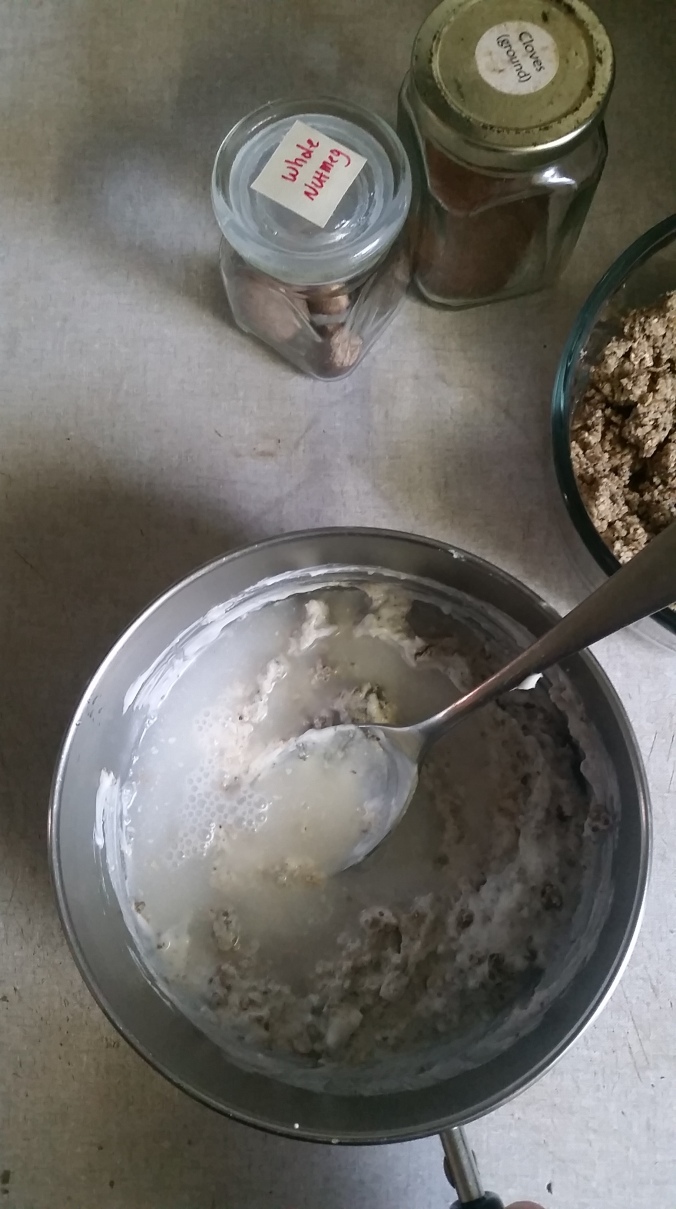
The almond milk, if you’re on Whole30, will probably be homemade, because there will be carageenan and other 30-illegal ingredients in most packaged almond milk.
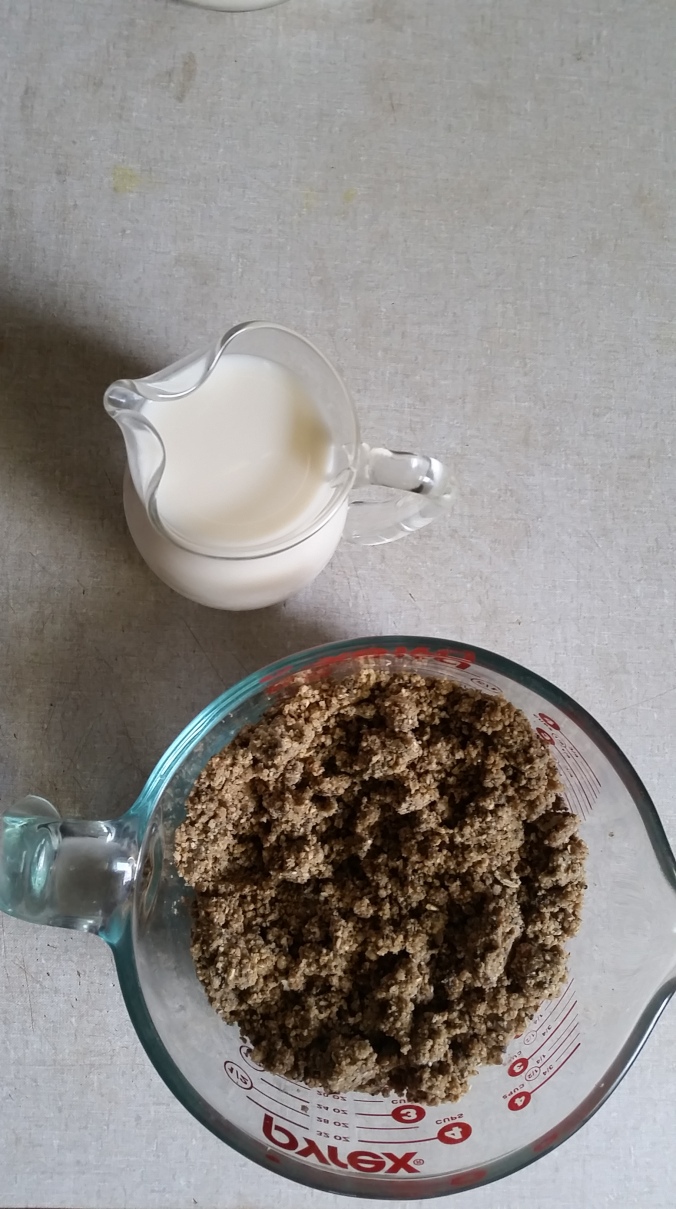
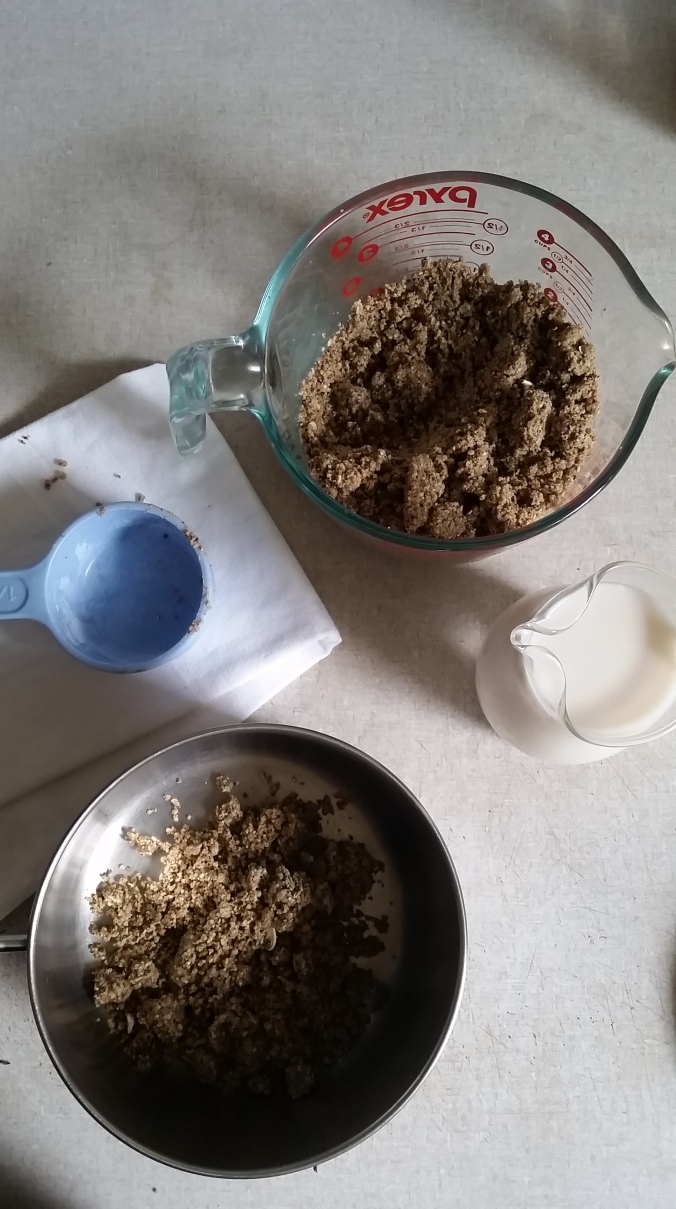

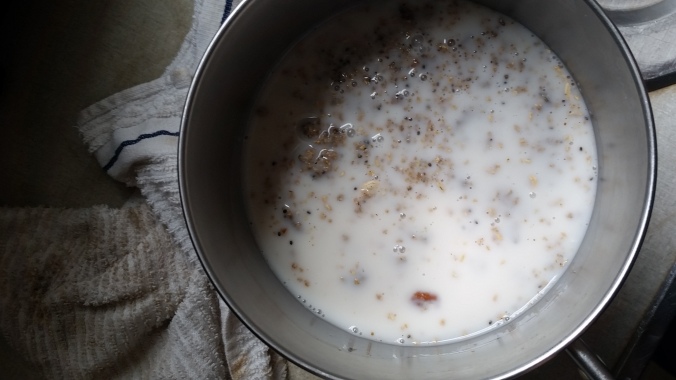
Then, you have the option of adding a sweetener if you choose! For a banana-blend UnGranola, mash in a sliced fresh banana, or slice in a frozen one and let it cook down while you stir and mash. The little kids seem to particularly like this version, and it makes a very pleasingly thick, gently-sweet porridge.
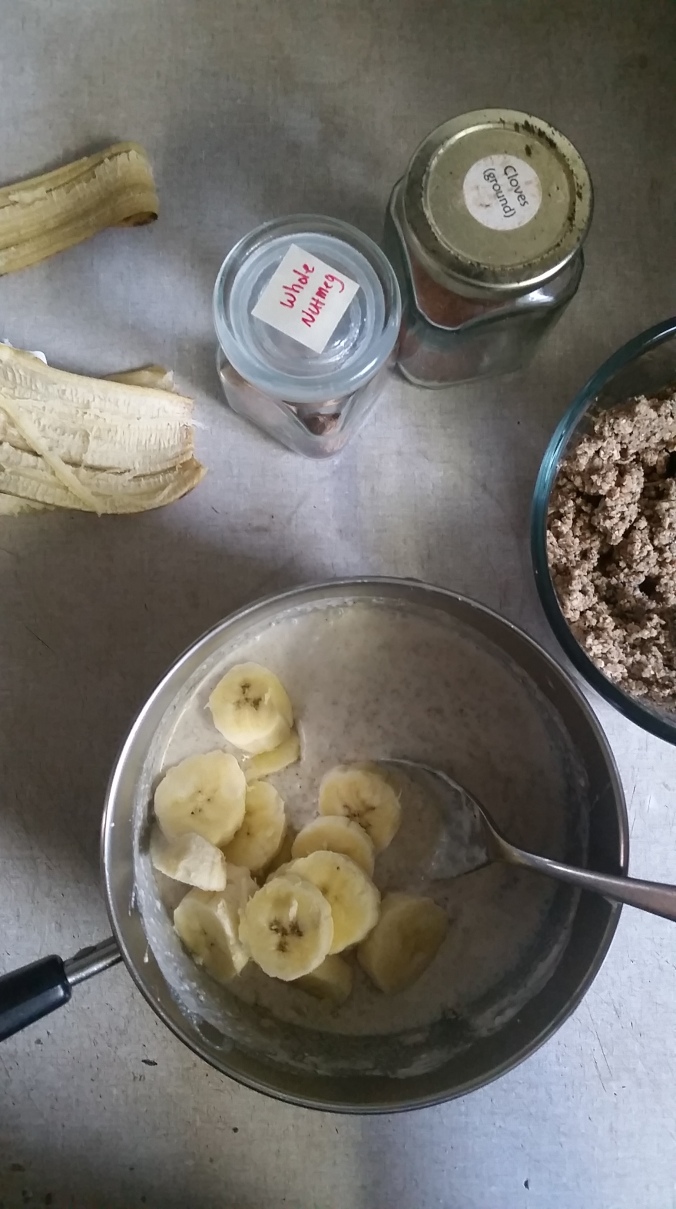
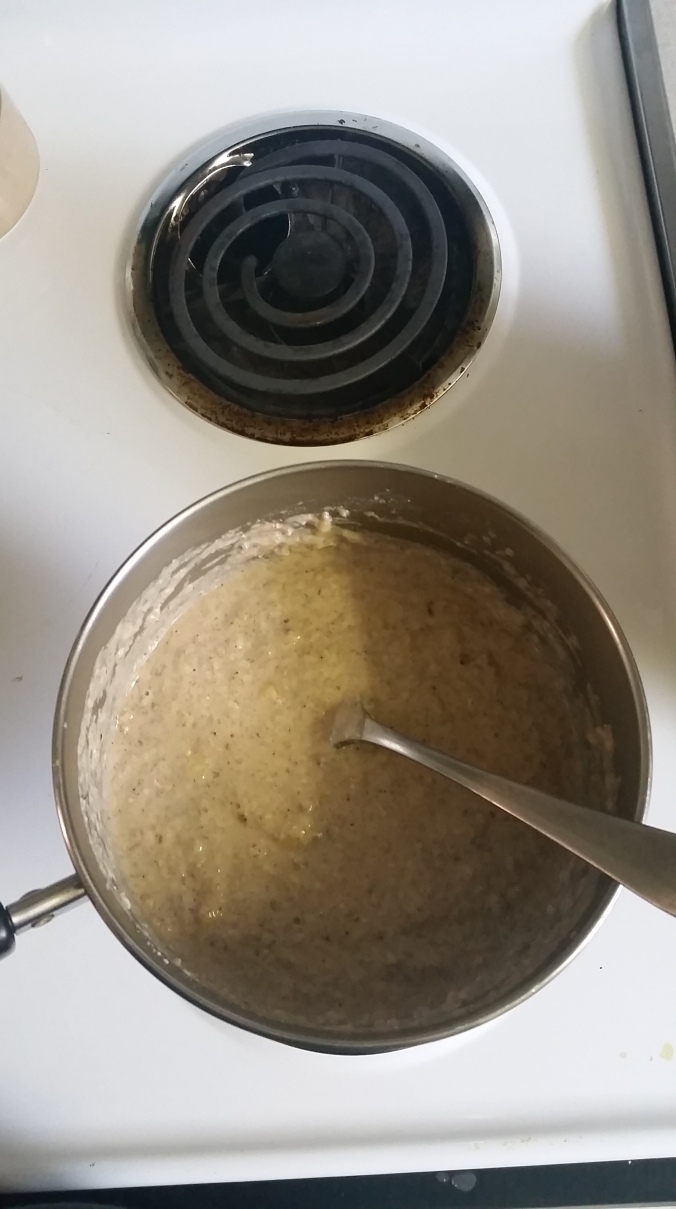
For Blueberries ‘n Cream, you can add blueberries or use them instead of bananas. Add them fresh or frozen close to the end of cooking, and gently stir in! It’s a good thing summer is coming because I’m almost out of frozen blueberries – we pick at least a hundred pounds a year and wash, freeze on pans and then store in gallon bags. After serving the bowls, I like to add a little extra spice to the top – some cinnamon and fresh nutmeg will enhance these berries!
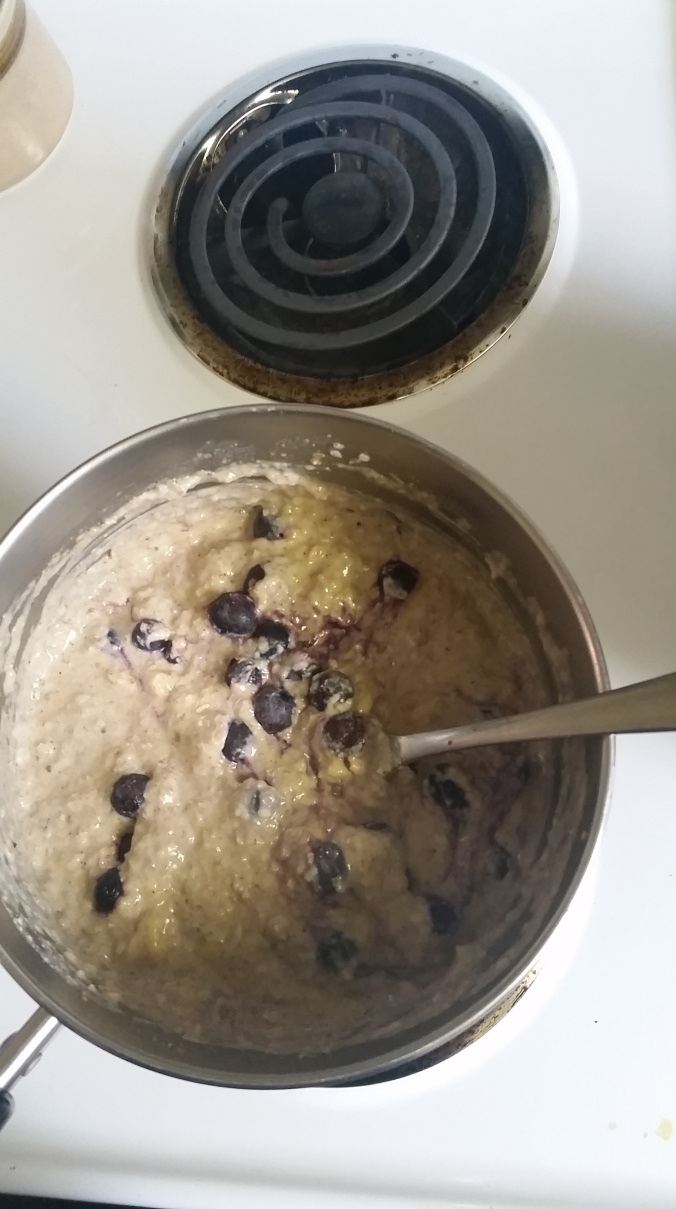

For Peaches ‘n Cream, I popped open a jar of peaches from our summer harvest. You could use fresh or frozen peaches, too! I mashed them in with a fork while the mixture was cooking.
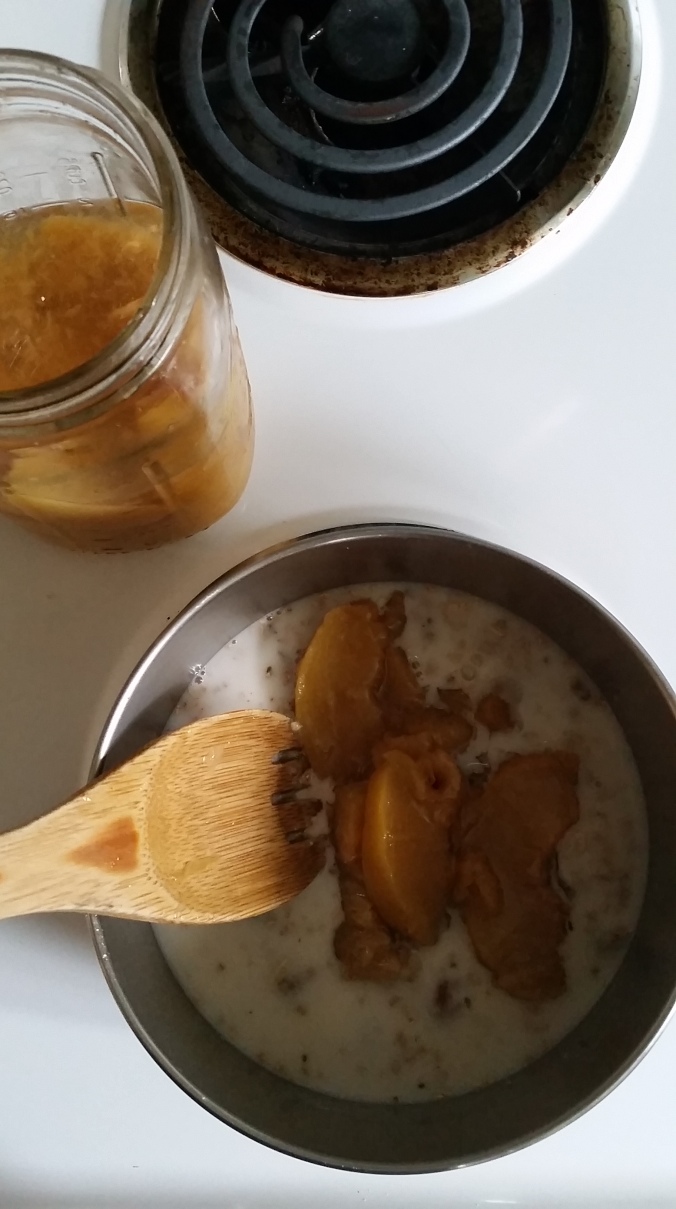
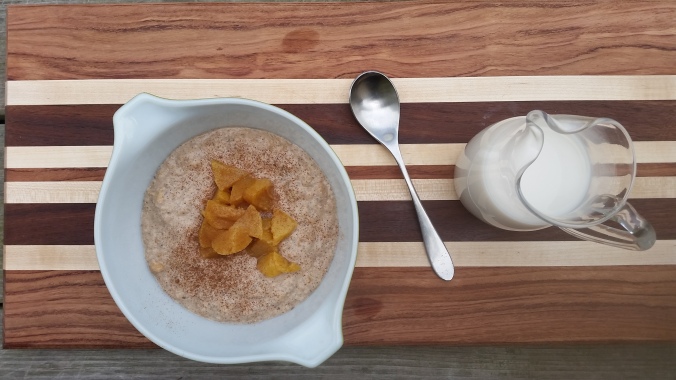
Serve the granola with more fruit, spices and milk if you like. A swirl of jam or jelly, some dried fruit, or a rich dollop of butter, ghee or coconut cream. The sky is the limit!
Download the recipe PDF here!
UnGranola Porridge
Measurements will vary; these are all approximate! You can increase one ingredient in favor of another, if you prefer. A nut-free version is distinctly smaller but still possible.
UnGranola Mix
Makes approximately 3 – 4 cups of mix, or 6 – 8 servings (1/2 cup dry mix per serving)
1 cup raw walnuts
1 cup raw, dried pumpkin seeds (or other gourd)
1 cup flaked or shredded unsweetened coconut
3/4 cup raw pecans
3/4 cup shelled, raw sunflower seeds
1/4 – 1/2 cup coconut flour
1/4 – 1/2 cup almond flour
1/4 – 1/2 cup hempseed
1/4 – 1/2 cup chia seed
1/4 cup raw cashews
1/4 cup ground flaxseed
Vanilla powder to taste (optional)
Ground cinnamon and cloves to taste
Freshly grated nutmeg
Ground pink Himlayan salt
Liquids:
Coconut cream and water, coconut milk, almond milk or another nut milk, a dairy milk if you prefer
Sweeteners (optional):
1 banana or another fruit, or maple syrup, honey, stevia or another sweetener of your choice
Making the mix
Pour all of the UnGranola Mix ingredients into a blender or food processor. If using the Vitamix, turn to speed 8 and stop every 30 seconds to scrape container with spatula; press down gently with the tamper while mixing, being careful not to over-blend into a paste.
Scrape mix into a glass container for storage; cap and store in the refrigerator.
To serve UnGranola Porridge:
Scoop 1/2 cup of mix and place in a small saucepan. Add up to 3/4 cup of the liquid of your choice, more if you like your porridge thinner. Stir briskly with a fork over medium heat, whisking in a banana if you choose and mashing it fully or choosing another variation or sweetener. Heat for about ten minutes, stirring frequently, or until mixture is hot and thick to your liking. Serve with additional fruit, spices or milk if desired.
Tips: If there are any coarse pieces of pumpkin seed or coconut, longer cooking will soften them. If you made your porridge too thin, whisk in a little coconut flour to bulk it up.
Variations:
Blueberries ‘n Cream: Stir in fresh or frozen blueberries towards the end of cooking. Grate fresh nutmeg on top before serving.
Peaches ‘n Cream: Stir in fresh, canned or frozen peaches, dicing or mashing in to your preference. Sprinkle with cinnamon and pour in cream to serve.
Pumpkin Spice: Add allspice to the spice mixture, and increase the amounts.
Gingerbread Wonderland: Add ground ginger and additional nutmeg to the pumpkin spice version; serve with hot applesauce.
PB&J: Swirl in a dollop of peanut butter, almond butter or another nut butter, and add a spoonful of jam or jelly just before serving.
Hot Butter: Top with a slab of butter or ghee, and a sprinkle of salt.
Download the recipe PDF here!
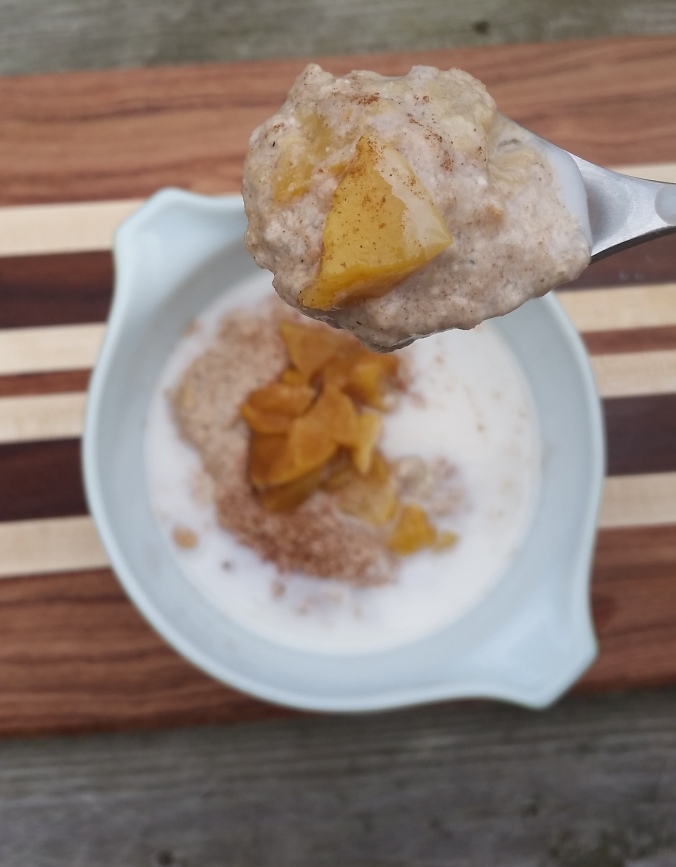
I hope you’ll keep me posted on any fun variations you and your family come up with – I am also always on the lookout for new and interesting ingredients to throw in the mix, so let me know what you find!!
Blessings,
Mrs H
See it first on Instagram
Face to face on the book























![IMG_20150921_073317[1]](https://farmandhearth.com/wp-content/uploads/2015/10/img_20150921_0733171.jpg?w=676)
![IMG_20150928_095615[1]](https://farmandhearth.com/wp-content/uploads/2015/10/img_20150928_0956151.jpg?w=676)














































